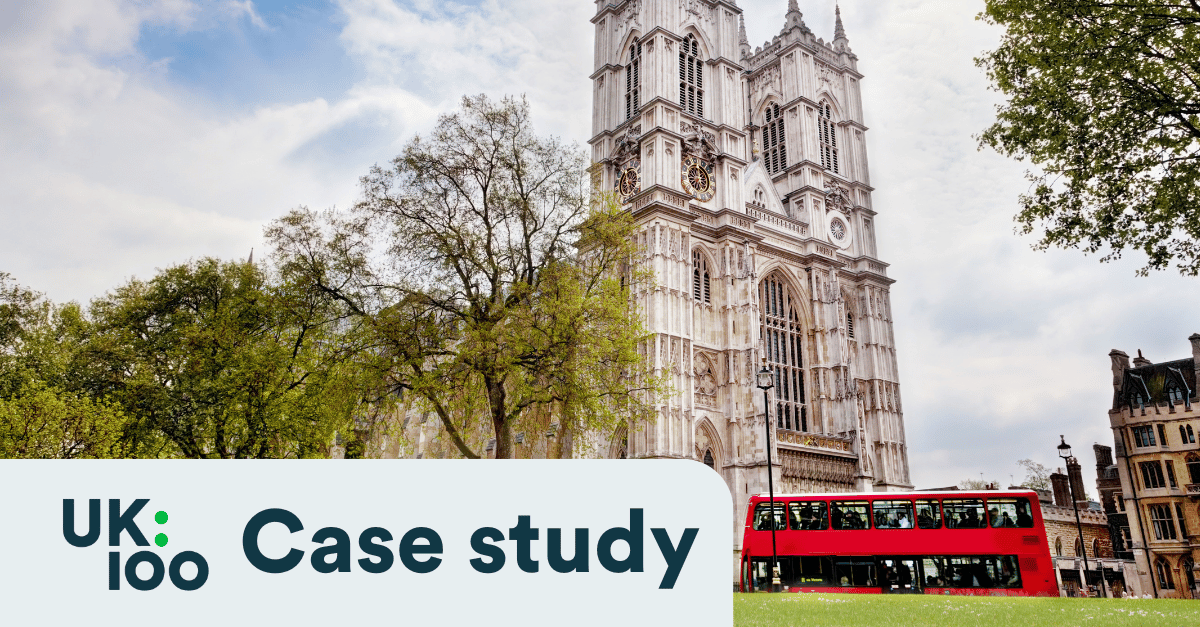The Environmental Justice Measure is a mapping tool that was designed by officers at Westminster City Council to highlight the differences in environmental conditions across the City of Westminster. It overlays environmental factors with levels of deprivation to bring in the concept of justice when considering where resources should be allocated. It aims to act as a resource for officers when deciding where in the city interventions and projects should be carried out.
"Westminster City Council faces significant environmental inequalities, with some communities experiencing greater challenges than others. To address these disparities, we have introduced the Environmental Justice Measure. This innovative tool highlights the areas most affected by environmental issues, allowing us to target interventions where they are needed most. By understanding and addressing these disparities, we can work towards a fairer, more sustainable future for all our residents. This measure is a testament to our commitment to environmental justice and our dedication to creating a healthier, more equitable city for everyone." – Councillor Ryan Jude, Westminster City Council Cabinet member for Climate, Ecology and Culture
The impact of climate change is known to disproportionately affect different communities and areas, even at the local level. While various regions may experience environmental hazards such as flooding and extreme heat to the same degree, some communities are better equipped to build resilience and adapt to these increasing challenges. In Westminster, the risk associated with extreme heat varies across different parts of the borough. For example, while some areas experience higher temperatures, certain communities have the resources to adapt through home improvements that enhance cooling.
To support Westminster City Council's ambition for a 'fairer environment,' it was essential to understand the relative differences in environmental risks and the distribution of resources across the city. Without this information, it would be challenging to identify opportunities for targeted interventions that consider both environmental risks and the resources available to communities for developing resilience.
Furthermore, there was a recognized knowledge gap in the national Index of Multiple Deprivation (IMD), which assesses the equity of areas within all cities in England. One of the seven themes of the IMD is the 'Living Environment,', which includes indicators such as air quality and road traffic accidents. However, this theme lacks crucial indicators related to climate change and people's living environment. Addressing this gap is vital for providing a comprehensive understanding of the environmental and social inequalities within Westminster, enabling the council to implement targeted interventions to improve sustainability and equity.
The Environmental Justice Measure (EJM) is a framework which supports Westminster's ambition for a “Fairer Environment”, through transparent data, and acting as a call to action and further collaboration between the council, residents and other partners.
The output of the project is an engaging digital story map that shows the overall EJM across Westminster. There are 10 environmental indicators and one socio-economic indicator in the EJM. These are useful when examined separately, and even more useful when brought together as part of the EJM, showing how residents are impacted by:
- Flood risk
- Heat risk
- Air quality
- Proximity to public open space
- Tree canopy cover
- Proximity to cycling facilities
- Proximity to bus stops
- % of people commuting by bike or walking
- % of people commuting by public transport
- Energy efficiency of buildings
- Index of multiple deprivation
The first four factors are those which impact people's experience of their environment. The final three factors cover people's ability to impact, engage with, or mitigate risks associated with their environment. It gives an overall picture of how different environmental conditions and issues layer on top of one another, creating areas of higher or lower environmental stress.
The decision to present the information in a digital story map was taken in close collaboration with the council’s communications team, to ensure the findings are accessible and centre the information most useful for residents and policy makers when it comes to evidence-led decision making.
A mix of publicly available and internal data were used for this project for example the flood risk map was originally used for Westminster’s strategic flood risk assessment so there was no requirement to create new datasets. The aim was to secure the most spatially granular data and most up to date datasets available for each of the 11 metrics, all of which needed to be aggregated by Lower Super Output Area and cover the whole of Westminster. Westminster collaborated with teams across the council to pro-actively identify the necessary metrics and conducted workshops to make sure that those datasets that would have the most impact to the overall measure and, by extension, to residents were included, whilst meeting the criteria of granularity and coverage.
The EJM shines a light on the environmental inequality across the city, with some residents facing more challenging circumstances to those of their neighbours. Importantly, by taking the time to get under the skin of this issue, Westminster City Council can work directly with communities and start to make significant improvements.
The development of the Environmental Justice Measure (EJM), from the initial kick-off meeting to its publication took approximately 5 months from June 2022 to November 2022. This included:
- Developing and agreeing the project scope
- Identifying key stakeholders within the council to support the project
- Developing and agreeing the methodology, the list of environmental indicators to include and the format to present the EJM.
- Identifying data sources and processing data
- Development of the StoryMap
- Final review and sign off from Cabinet Members
Since the publication of the EJM, there has been a process of updating the data going into the maps, which has taken approximately four weeks to complete.
The core project group was comprised of officers from three teams: Climate Emergency, Strategy & Intelligence, and Environment Policy. Councillors fed into the development of the Environmental Justice Measure (EJM) by deciding which environmental indicators should be included and providing guidance on the descriptions of each of the environmental measures within the StoryMap, suggesting that we include data to compare Westminster to London.
There was also engagement across the council to identify the datasets available, and to gain feedback on the EJM maps and how they were presented.
The Environmental Justice Measure (EJM) has supported officers across the council to focus resources on where they are needed most in the City of Westminster. This has included supporting in the dissemination of the Greening Westminster fund. The Greening Westminster Programme is a small grants programme, run by the Westminster City Council Place Shaping Team, designed to support greening projects which improve and increase Westminster’s green infrastructure and open spaces.. Place shaping officers worked with the EJM team early on to understand how best to use the tool with regards to areas of deprivation, which included doing a deep analysis on several different EJM indicators. Key indicators included Tree Canopy Cover and Proximity to Open Spaces, as well as supplementary ones, like Air Quality. This resulted in more than 15 greening projects being delivered in areas the EJM has identified as being considered in need of environmental support.
Alongside the Greening Westminster fund, the EJM has also supported the development of other environmental projects such as the Council’s Climate Risk and Vulnerability Assessment by providing the data and maps created from the EJM project on heat risk and flooding.
Having a small core team of technical and policy experts was hugely beneficial to progressing this project. Each member of the team had a clearly defined role, from data gathering and processing, geographic information system (GIS) mapping, to drafting briefing documents for cabinet members.
When political decisions needed to be made, a list of potential options were provided to cabinet members for them to provide steer. Approaching the project this way allowed for a data-first approach, with councillors able to make informed decisions.
It was also crucial for the team to engage with officers across the council, to seek guidance on the best datasets for the EJM .
Having developed the EJM, some of the key takeaways of vital elements in the process include:
- Understand what data sources are available and keep track of how often each dataset is updated.
- Utilise the ArcGIS StoryMap format which is both interactive and engaging with an intuitive user interface to develop the maps.
- Collaborate with officers from across council teams to ensure they are informed about the tool and can effectively integrate it into their work.
To support other councils to replicate the Environmental Justice Measure, Westminster City Council has published the methodology which contains links to all data sources.
The project was developed completely in house using open data sources and GIS software for which the Council already had a licence, the only cost associated with the development of the EJM was 3 officers working 20% of their time each week for 12 weeks.
Following the initial publication of the EJM, Westminster Council has updated the datasets which feed into the maps, to ensure the most up-to-date data is being used in decision making. Moving forward, this data review process will happen annually, to ensure the tool remains fit for purpose.
The council has also added an additional ‘projects map’ to the StoryMap which shows the location of new projects related to the indicators within the EJM, these include greening projects, retrofit projects and air quality sensors. By highlighting the work happening, and where, in Westminster these projects are taking place, the EJM ensures that resources are being deployed where they are needed most . It also acts as a tool to show residents that the Council is taking Environmental Justice seriously and that up-to-date data is being used to inform decision making.
There will be continued engagement with officers across the Council to ensure the tool is embedded in their work. Previous engagement work has been through workshops targeted at specific teams as well as council wide presentations.





